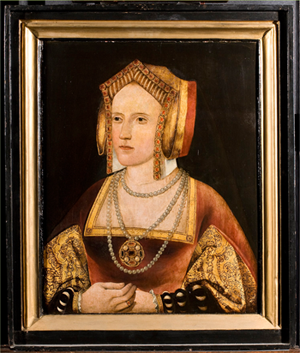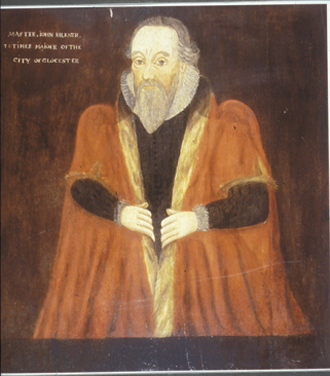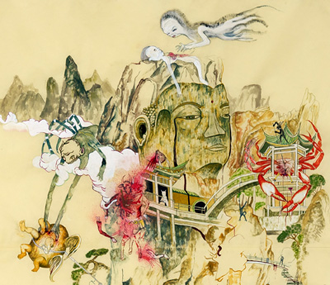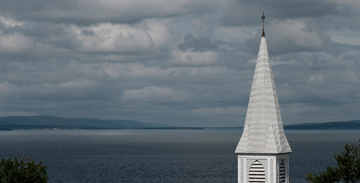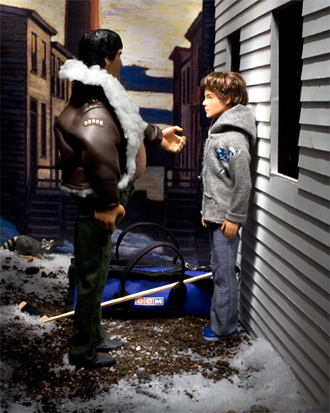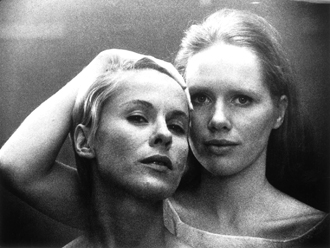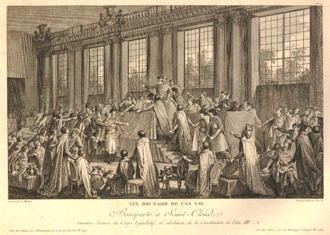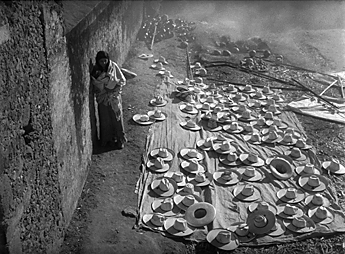===============================================
Friday, October 1, 2:30 p.m., 412 St. Patrick’s Building.
Khalia Scott, Director, SPAO and President, Festival X
Khalia Scott will talk about her experiences founding/co-directing the School of the Photographic Arts: Ottawa and, more recently, organizing a successful photographic arts festival- Festival X. Both the School and the Festival have become invaluable institutions in Ottawa for the advancement of knowledge of photography and for the promotion of creativity and innovation in this field.
===============================================
Tuesday, October 12, 2:30 p.m., 412 St. Patrick’s Building.
“Making Art in Tudor Britain: evidence for understanding the production and reception of painting in the sixteenth century”
by Dr. Tarnya Cooper, National Portrait Gallery, London
This talk will focus on recent research at the National Portrait Gallery in London which has looked at over eighty Tudor and Jacobean portraits. The Gallery has undertaken a major technical survey on its early collections using x-ray, infra-red reflectography, pigment analysis and a range of other techniques. The results have revealed evidence of construction and new information about the development of compositions and drawing practices, greater awareness of issues concerning authenticity, as well as evidence of patron led involvement. The evidence allows us to explore workshop practices, the production of versions and copies and the contexts and meanings of sixteenth century portraiture.
Image Caption: Unknown British School, Portrait of Catherine of Aragon, oil on panel, c. 1520. Lambeth Palace Collection, London.
===============================================
Friday, October 29, 2:30 p.m., 412 St. Patrick’s Building.
“Between Self-Analysis and Commercialization – Self Portraits by Fashion Photographers”
by Dr. Anja Nadine Werner, Researcher, National Gallery of Canada.
Fashion photography follows a commercial approach, and therefore was not considered a relevant subject for art historic research until the 90s. Today it seems to be recognized more and more as an art form. This being said, the lecture analyzes the self-conception of applied photographers between commissioned works and high art, and how their self-understanding has changed in the 20th and early 21st centuries. The main subject are self portraits by Erwin Blumenfeld (1897-1969), Helmut Newton (1920-2004) and Wolfgang Tillmans (born 1968). The lecture examines the involvement of self portrayals in commissioned works as a form of self-referentiality in context of mass media.
Image Caption: Helmut Newton, Self-Portrait with wife and models, Vogue-Studio, Paris, silver gelatin print, 1981. From: Newton, Helmut. “Portraits. Bilder aus Europa und Amerika.” Munich: Schirmer/Mosel, 1990, plate 14. © Helmut Newton Estate
===============================================
Friday, November 12, 2:30 p.m., 412 St. Patrick’s Building.
“Lifting the Heavy Stone of Classicism’: Polite and Vernacular Portraiture in post-Reformation England”
by Robert Tittler, Adjunct Professor, Carleton University
The familiar ‘Holbein to VanDyck’ canon of English portraiture (c.1540-1640) privileges those classically-influenced, formal and polite works traditionally associated with ‘Renaissance art’. That approach ignores what may have been the majority of English portraits of the time, produced by native-English ‘craftsmen-painters’, in the provincial vernacular. This talk ‘lifts the heavy stone of classicism’ to reveal that alternate genre.
Image Caption: John Falkner, Mayor of Gloucester, oil on panel, c. 1618. Gloucester Folk Museum, U.K. With the kind permission of the City of Gloucester. © Gloucester City Council.
===============================================
Friday, November 26, 2:30 p.m., 412 St. Patrick’s Building.
“Of Manga & Mongrels: Nostalgic Art from a Hybrid Life”
Artist Talk with Howie Tsui
Howie Tsui’s recent body of work, Horror Fables, satirizes the ubiquity of fear through hyper narrative paintings in the form of Ming dynasty scrolls. These dense works are inspired by imagery from traditional Asian ghost stories, Buddhist hell scrolls, Hong Kong horror comedies, war imagery and familial accounts of the supernatural. For the talk, he will discuss the trajectory of his artistic practice, from his early Kawaii Noir era to his Of Manga & Mongrels and Of Shunga & Monsters series, with a particular focus on his newest body of work – Horror Fables.
Image Caption: Howie Tsui, Mount Abundance and the Tip Toe People # 2 (detail), 2010
===============================================
Friday, January 7, 2:30 p.m., 412 St. Patrick’s Building.
“Anglicana Tales: Church of England Gothic in Atlantic Canada, ca. 1840-1890 ”
by Peter Coffman, SSAC: Art History
Around the middle of the nineteenth century, the architectural style of medieval, Roman Catholic Europe became the style of choice for the Anglican Church in the Atlantic colonies of British North America. This presentation will explore how this came about and what Gothic meant to those who transplanted it to Canadian shores, as well as what was lost – and gained – in the translation.
Image Caption: Peter Coffman, Trinity Church in Digby, Nova Scotia, 2009.
===============================================
Friday, January 21, 2:30 p.m., 412 St. Patrick’s Building.
“The Well-Curated Cheeseboard: A Year in the Life of a Curator”
by Sandra Dyck, Curator, Carleton University Art Gallery
These days, curatorial studies programs are on the rise, the word “curate” is pervasive in public discourse, the curatorial profession seems veiled in mystique and even glamour, and there is intense competition for the relatively few Canadian curatorial jobs that do get posted. Using the year 2009 as a case study, Sandra Dyck, curator at Carleton University Art Gallery since 2005, will speak about the daily realities of curatorial work at a small university art gallery.
===============================================
Friday, February 4, 12:00 p.m., 412 St. Patrick’s Building. (note different time from regular schedule)
“The Nation as a Dollhouse: the recent photographic work of Diana Thorneycroft”
by Peter Hodgins, School of Canadian Studies
In this talk, I will discuss Diana Thorneycroft’s alternately playful, ambivalent and critical engagement with contemporary English-Canadian cultural nationalism through a close reading of her 2010 series titled A People’s History. More specifically, I will explore how this series represents the latest result of a series of formal experimentations with dolls, the diorama, visual humour and quotations of commodity culture. In bringing together all of these disparate elements, I will argue, Thorneycroft lures us into the dark side of Canadian national memory, forcing us to accept that sexual predation and colonial violence are also “part of our heritage”.
Image Caption: Diana Thorneycroft, A People’s History (Coach), 2010.
===============================================
Friday, February 18, 2:30 p.m., 412 St. Patrick’s Building.
“Acoustical Apparitions and Disembodied Sounds in the Films of Ingmar Bergman”
by Alexis Luko, SSAC: Music
The acousmêtre or “acoustical being” of film is heard but rarely seen. Famous examples include the Wizard of Oz and the mother from Psycho – bodiless, off-screen voices that avoid the camera’s gaze, thus maintaining an omniscient point of view and a magical presence. According to Michel Chion, when the acousmêtre’s body is unveiled, it typically undergoes “de-acousmatization” and is drained of special powers. This paper explores the hermeneutic implications of a variety of “acoustical beings” in the films of Ingmar Bergman. Bergman destabilizes the relationship between sound and the body by populating his films with groaning corpses, musical phantoms, bodiless musicians, and acoustical apparitions that shift in and out of focus.
Image Caption: Ingmar Bergman’s Persona (1966)
===============================================
Friday, March 4, 2:30 p.m., 412 St. Patrick’s Building.
“Prints, Posterity and Everyday Politics in Revolutionary France”
by Stéphane Roy, SSAC: Art History
In the early days of the French Revolution, a consensus quickly emerged among politicians and artists alike: France was undergoing radical transformations and the fine arts needed to represent this new reality as well as benefit from it. It was widely believed that the reign of Liberty would foster great art and contribute to the regeneration of France. This utopian view, however, was met with resistance, partly for ideological motives but mostly for practical reasons: due to time requirements, paintings were often out of sync with public opinion and rapidly changing “faction” politics. Officials turned their attention to prints as the ideal medium to promote the revolutionary agenda. Art historians have since assumed that the art of the printmaker is naturally attuned to propaganda, but was this the case? Have scholars themselves been abused by revolutionary discourse? As this paper will show, a closer look at daily politics and into administrative and financial archives of this period reveals a quite different picture.
Image Caption: Isidor Stanislas Helman after Charles Monnet, Bonaparte à Saint Cloud, ca 1800. The British Museum, London. © The Trustees of the British Museum
===============================================
Friday, March 25, 2:30 p.m., 412 St. Patrick’s Building.
“The Unmaking of the Ugly Gringo: The modernist aesthetics of Gabriel Figueroa and the reconfiguration of Mexico in John Ford’s The Fugitive (1947)”
by Zuzana Pick, SSAC: Film Studies
In her review for the Sunday Times on May 4, 1948, British film critic Dilys Powell wrote: “the most significant contributors to The Fugitive are the Mexican scene, the Mexican sunlight and Ford’s Mexican collaborators.” Should this statement be read as reiteration of the allure of Mexico as an exotic other or an acknowledgement of a creative partnership? The lecture will attempt to answer these questions. Directed by a Hollywood veteran, photographed by a Mexican and based on a novel by a British writer, The Fugitive is suggestive of the complexities at work in modernist representations of rural Mexico that, irrespective of their national origins and with distinctive fusion of local and foreign idioms, are central to filmic constructions of “Mexico.”
Image Caption: The Fugitive (John Ford 1947) Filmstrip frame digitalized by Gabriel Figueroa Flores
===============================================

